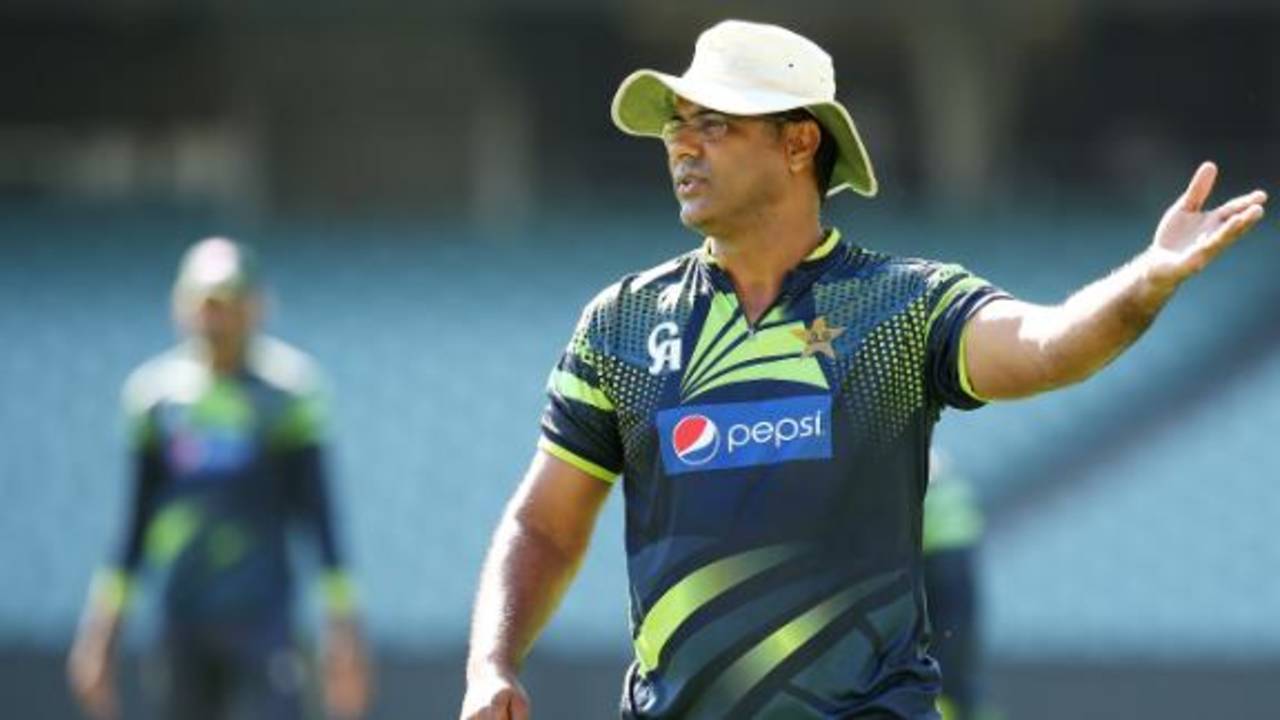When you go into a match looking for a Pakistan-like comeback that defies logic, you are looking for that one definitive moment that gives them irresistible momentum. That they can do so from hopeless situations is what makes them such a beloved team. In the 2009 World T20, it was that Shahid Afridi catch running back and over his head. In the 1992 World Cup, Inzamam-ul-Haq's cameos gave them that momentum. Usually, though, those moments come with the ball. Against hope, Pakistan were hoping they would get such a moment, and then for everything to magically fall in place.
There were moments when Pakistan bowled. Wahab Riaz bowled a superb slower ball followed by a quick and full delivery that beat Usman Khawaja more comprehensively than he has been beaten since perhaps the start of the Big Bash League. That's a moment you can rally around, but consider this: Australia were already 28 in the fourth over when they should have been only 21. Shoaib Malik had let one through his legs at point, Umar Akmal had dived over a drive at short extra cover.
Still, Pakistan found their way back through individual brilliance. In his next over, Wahab came back with a lovely ball that jagged back in to hit top of the middle and leg stumps of David Warner. That's the kind of ball you can rally around. Wahab's celebration suggested Pakistan might be on to something. In the same over, though, Mohammad Sami chased after a ball to deep midwicket slower than you can get inside an Indian cricket ground. And then took longer to throw the ball than it takes to get out. And there, ladies and gentlemen, not counting any overthrows, we had the first all-run four of this tournament. Perhaps the first in a Twenty20 international in India, considering the sizes of the grounds and the quickness of the outfields.
By a generous account, Pakistan let go 18 runs through ground fielding that doesn't match up to international standards in 2016
Khalid Latif and Sharjeel Khan, batsmen both, added themselves - as they have been doing - to the bowlers as candidates to be hidden in the field. By a generous account, Pakistan let go 18 runs through ground fielding that doesn't match up to international standards in 2016. Deep fielders were slow to set off the mark, short fine leg wouldn't go after balls hit to square leg, the backing up was non-existent. In comparison you would see a deep square leg and a short fine leg from Australia competing with each other to rush in towards the stumps for a throw from wide long-off.
It's not just about 18 runs although that itself is a big number - they were poorer in the field
against New Zealand, and they lost by 22 runs. It is about the pressure that the lack of these runs creates on the batsmen, making them play lower-percentage shots, which can result in wickets. Australia were 77 at the end of 10 overs when they really should have been 67 had Pakistan fielded normally. Just normally, not spectacularly.
The approach was mirrored with the bat with everybody looking for big shots. At one point, when Khawaja made a chase at the boundary followed by a tumbling save that included a misfield, Akmal and Latif took just the two runs. When Ahmed Shehzad skied one early on, he and Sharjeel didn't bother to cross.
Shahid Afridi did bowl well, but you wouldn't want to get started on his captaincy. Pakistan are the only side in this tournament who have gone without playing a specialist spinner even once. On a slow pitch, with the quicker bowlers going for a tap, he didn't call upon Shoaib Malik.
It is easy to say Pakistan have always been slow in the field and lazy with the running, and they have still won big. Wasim Akram and Waqar Younis might have had twice the wickets they did had they had half-decent slip fielders. You never saw Inzamam-ul-Haq run hard. Just cast your minds back to all those awesome memories of Pakistan on a roll, and you will see hustling fielders, charging at balls, wanting the ball to come to them, encouraging the bowlers, backing up throws. More importantly, fielding, the effort put in it, is quite a fair indicator of how much the team wants to be out there.
The skillful comebacks that make jaws drop are great to watch, but for the team itself to always rely on them is not a great idea.
Sidharth Monga is an assistant editor at ESPNcricinfo
